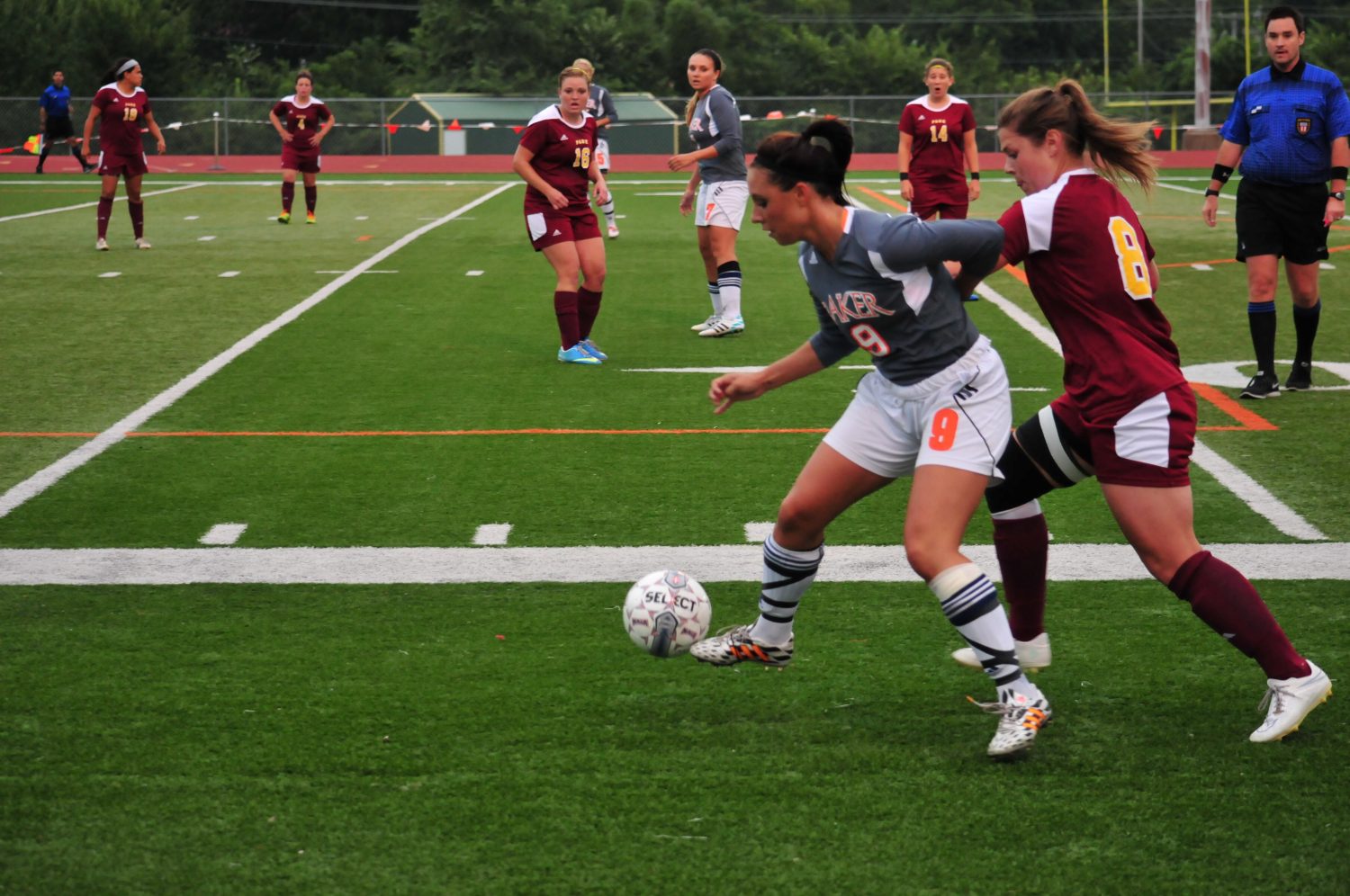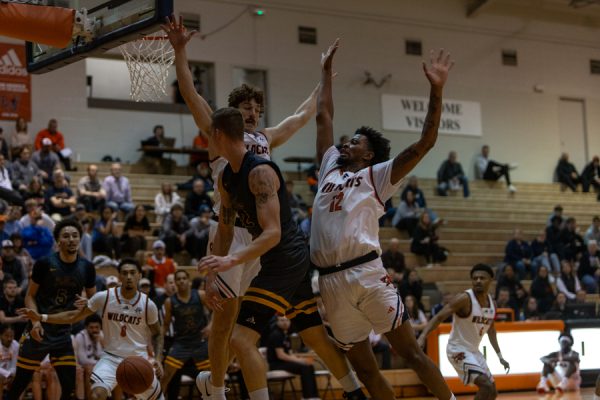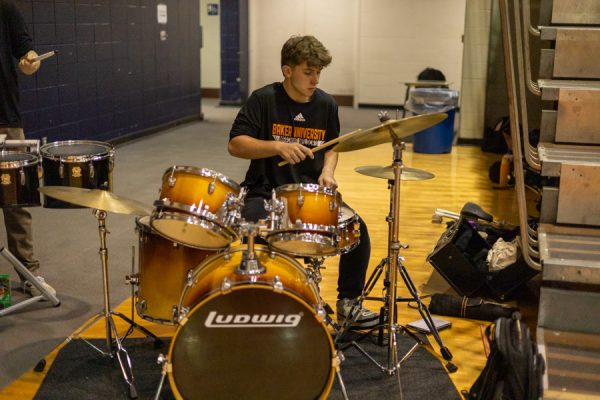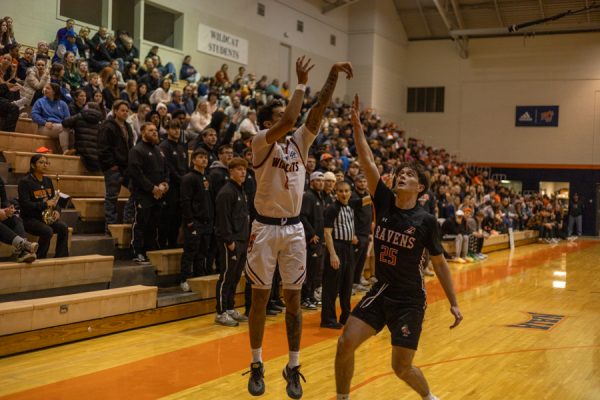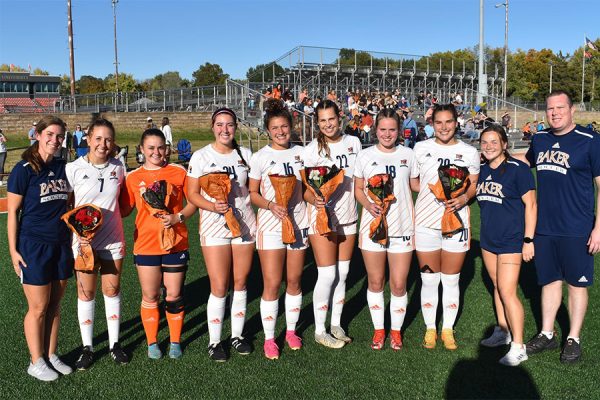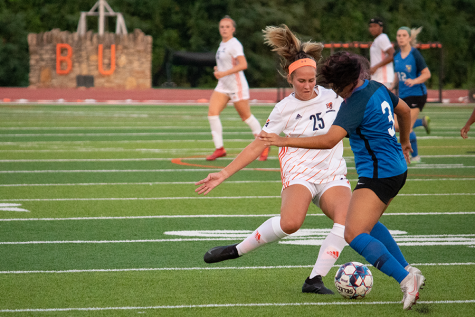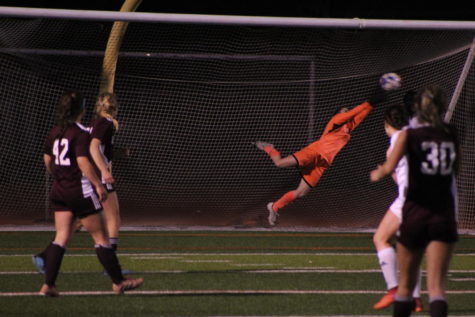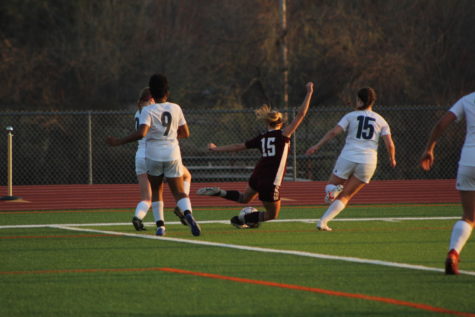Sosa battles through condition
Bailey Sosa has had to overcome an uncommon condition in her time as a Wildcat. The senior soccer player suffers from a condition called venous malformations, which cause visible blue clusters of veins on her back and can lead to severe consequences when coupled with contact sports.
“They’re essentially benign tumors that run down the left side of my body and the left side of my back,” Sosa said. “By themselves they aren’t really rare, but what makes my condition pretty rare is the fact that mine attack my muscle, and they become intertwined with my muscle, which causes a lot of pain and discomfort.”
Sosa, a midfielder from Emporia, was diagnosed with the condition when she was 4 years old, but she noticed it beginning to worsen during her sophomore year at Baker. She dealt with her misfortune and stuck with her team until its season and her career came to an end Friday night.
The number of lumps on her back has since increased to six and she has undergone four different cycles of interventional radiology treatment, each coupled with its own long and arduous recovery process.
The treatment that Sosa went through involved hundreds of injections with an alcohol solution in effort to find the feeder veins, which are what cause her tumors to grow.
“It’s a treatment, not like a cure. It’s never going to go away, but this is kind of a way to slow the process of the growth,” Sosa said. “The treatment itself doesn’t last long, but after it, my recovery is probably two to three weeks where I can’t do anything. I can’t walk, I can’t really dress myself, I can barely eat, and I’m just on bed-rest after the treatment for a few weeks.”
To keep playing soccer at a collegiate level with her condition, Sosa has learned a new way of play. She has learned to develop an awareness of the left side to protect her from any potentially damaging contact. Sosa is constantly maneuvering her play to keep from the left side of her body.
“My teammates are really good about it in practice,” Sosa said. “They don’t hit me and they’re really cautious about how they move around me.”
It’s a completely different atmosphere in games for Sosa.
“It’s kind of scary, because stepping on the soccer field used to be so safe and harmless for me and something that I really like to do,” Sosa said. “Now I feel vulnerable when I’m out there because I never know when I could get hit the wrong way and it could be dangerous and really painful for me.”
Besides the pain, too great of an impact on the malformations could cause them to rupture, resulting in internal bleeding. These factors led her to wonder whether continuing to play soccer would be in her best interest.
“Sometimes I can barely get out of bed, but I have to go to soccer and pretend like everything is OK and run like I’m OK,” Sosa said. “Sometimes I’m like, ‘this isn’t worth it, why am I doing this to myself?’”
But Sosa has found support from her team, which kept her playing the game she loves until last Saturday, when the Wildcats’ season ended to Culver-Stockton on penalty kicks in the first round of the 2014 Heart of America Athletic Conference Tournament.
“I’ve had so much support from my coaches and my teammates forever,” Sosa said. “I know that it’s something I can get through, and something they can always help me through and they’re so supportive no matter what.”


